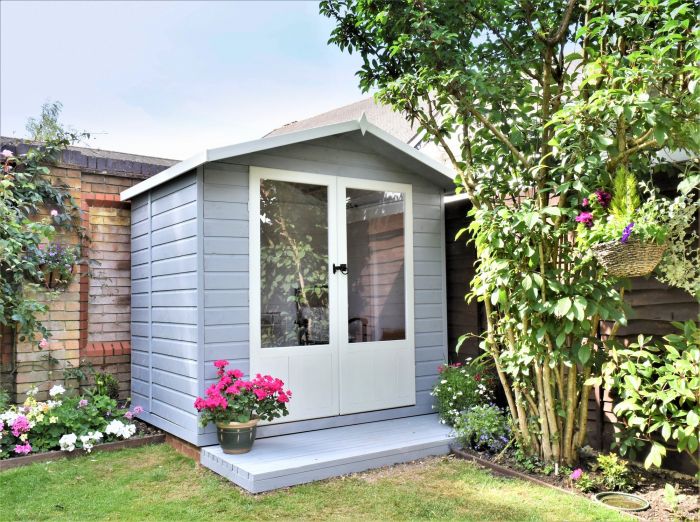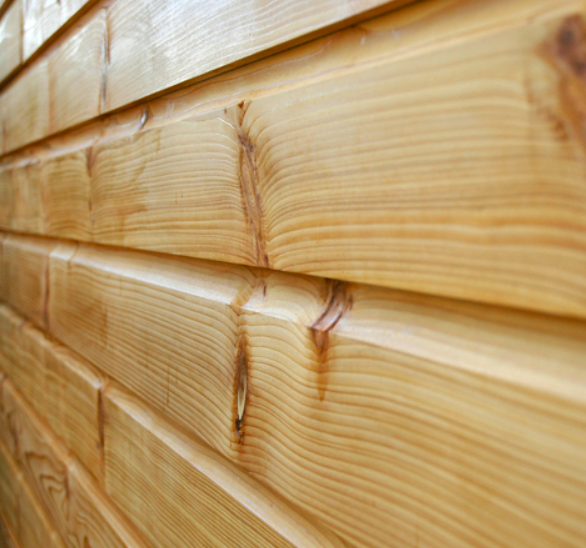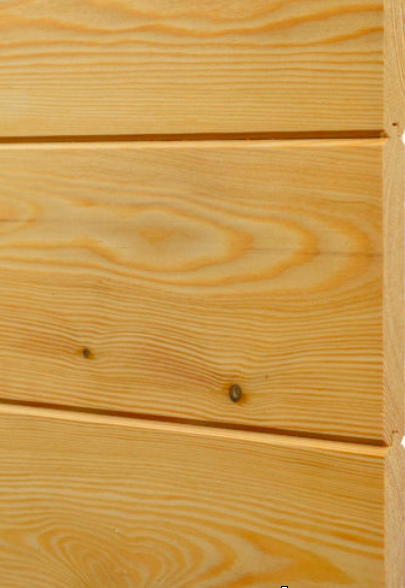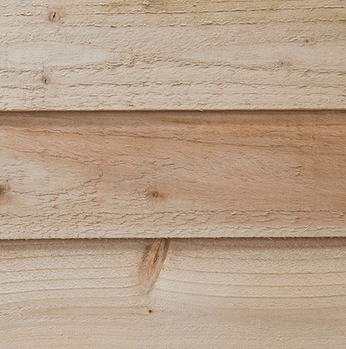
So, what exactly is cladding on a summerhouse?
Cladding is how the timber boards fit together to create the walls.
There are a number of cladding types which dictate how the boards are assembled. The differences between them not only affect the summerhouse’s appearance but also weather resistance and insulation.
The main 3 types of cladding that are used for summerhouses are:
- Shiplap
- Tongue and Groove
- Overlap
Shiplap
- Interlocking timber boards
- Traditional style
- Slight indent along each board producing a tight overlapping/interlocking edge
- Scalloped profile
- No gaps
- Rainwater runs off easily
- Extremely weather resistant
- No gaps
- Robust

Example of Shiplap summerhouses – Shire Barclay Summerhouse or Shire Westminster Summerhouse
Tongue and Groove
- Interlocking timber boards – the same benefits of shiplap
- Timber boards interlock with, and slot into, each other to create a flat wall
- Slot cut along the edge of the board – the groove
- Opposite edge has a deep, thin ridge – the tongue
- The tongue slots into the groove of adjacent piece
- Very tight seal
- Extremely weather resistant
- No gaps
- Robust
- Sleek finish
- Robust

Example of Tongue and Groove summerhouse – Mercia Helios Summerhouse
Overlap
- Timber boards nailed to building’s frame
- Each board overlaps is attached to the board beneath
- Allows rain to run off
- Allows timber to expand and contract easily with the changing temperatures throughout the year
- Not a closed seal
- Prone to moisture
- Draughts

Example of Overlap summerhouse – Forest Oakley Summerhouse
So, in summary, the interlocking timbers of both tongue and groove and shiplap cladding create a tight seal which result in strong, durable and weather resistant walls, keeping moisure and draughts out.
They are a superior option for a summerhouse compared with overlap cladding which does not create as tight a seal, therefore making it more prone to leaks and moisture getting in.
